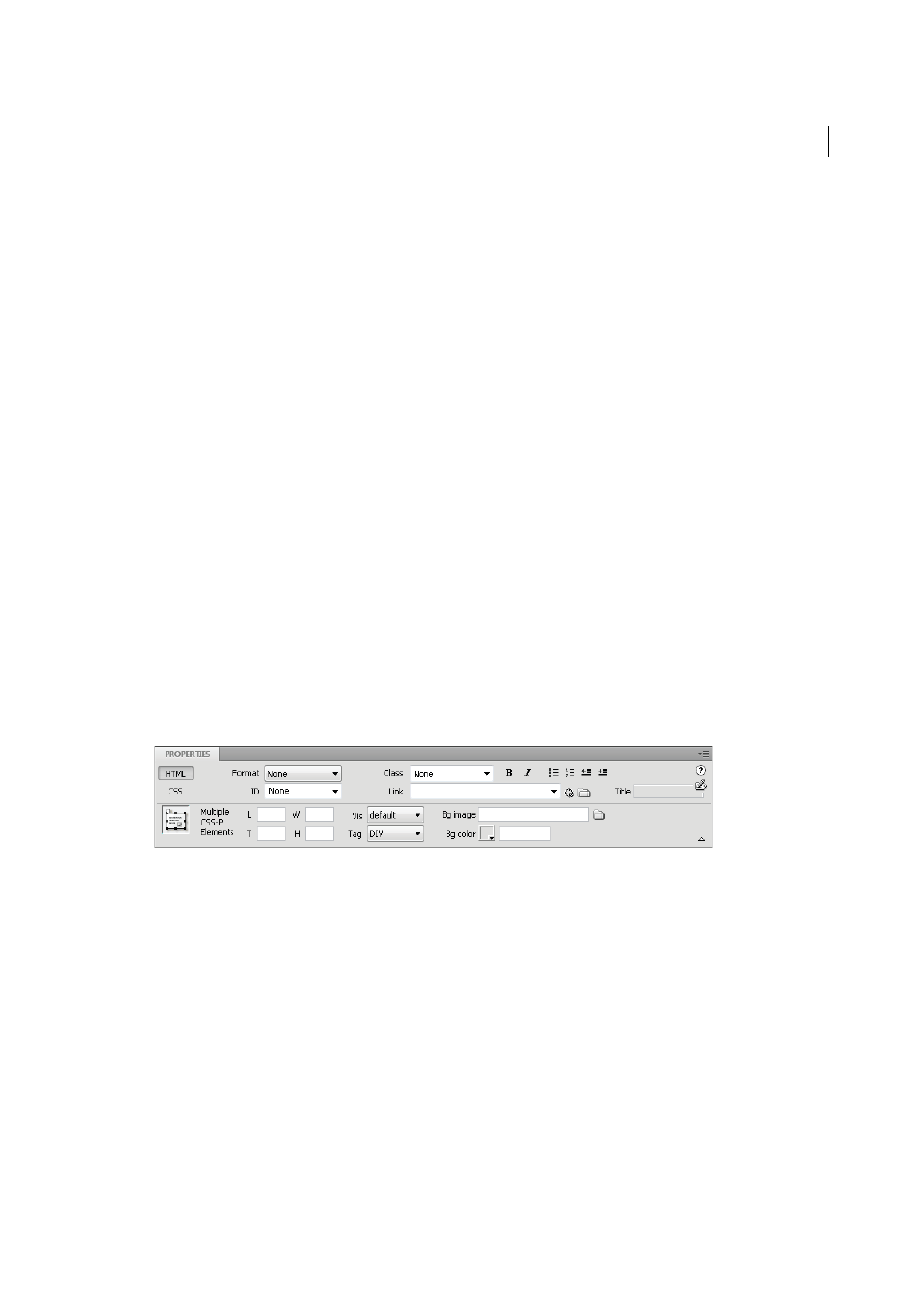View or set properties for multiple ap elements, Select multiple ap elements, View and set properties for multiple ap elements – Adobe Dreamweaver CC 2015 User Manual
Page 233

226
CSS
Last updated 6/3/2015
Visible indicates that the extra content appears in the AP element; effectively, the AP element stretches to
accommodate it. Hidden specifies that extra content is not displayed in the browser. Scroll specifies that the browser
should add scroll bars to the AP element whether they’re needed or not. Auto causes the browser to display scroll
bars for the AP element only when needed (that is, when the AP element’s contents exceed its boundaries.)
Note: The overflow option has uneven support across browsers.
Clip
Defines the visible area of an AP element.
Specify left, top, right, and bottom coordinates to define a rectangle in the coordinate space of the AP element
(counting from the upper-left corner of the AP element). The AP element is “clipped” so that only the specified
rectangle is visible. For example, to make an AP element’s contents invisible except for a 50-pixel-wide, 75-pixel-
high visible rectangle at the upper-left corner of the AP element, set L to 0, T to 0, R to 50, and B to 75.
Note: Although CSS specifies different semantics for clip, Dreamweaver interprets clip the way that most browsers do.
4
If you entered a value in a text box, press Tab or Enter (Windows) or Return (Macintosh) to apply the value.
View or set properties for multiple AP elements
When you select two or more AP elements, the Property inspector displays text properties and a subset of the full AP
element properties, allowing you to modify several AP elements at once.
Select multiple AP elements
❖
Hold down Shift while selecting AP elements.
View and set properties for multiple AP elements
1
Select multiple AP elements.
2
In the Property inspector (Window > Properties), click the expander arrow in the lower-right corner, if it isn’t
already expanded, to see all properties.
3
Set any of the following properties for multiple AP elements:
L and T (left and top)
Specify the position of the AP elements’ upper-left corners relative to the upper-left corner of
the page, or of the parent AP element if nested.
W and H
Specify the width and height of the AP elements.
Note: If the content of any AP element exceeds the specified size, the bottom edge of the AP element (as it appears in the
Design view in Dreamweaver) stretches to accommodate the content. (The bottom edge doesn’t stretch when the AP
element appears in a browser, unless the Overflow property is set to Visible.)The default unit for position and size is
pixels (px). You can instead specify the following units: pc (picas), pt (points), in (inches), mm (millimeters), cm
(centimeters), or % (percentage of the parent AP element’s corresponding value). The abbreviations must follow the
value without a space: for example, 3mm indicates 3 millimeters.
Vis
Specifies whether the AP elements are initially visible or not. Select from the following options:
• Default does not specify a visibility property. When no visibility is specified, most browsers default to Inherit.
